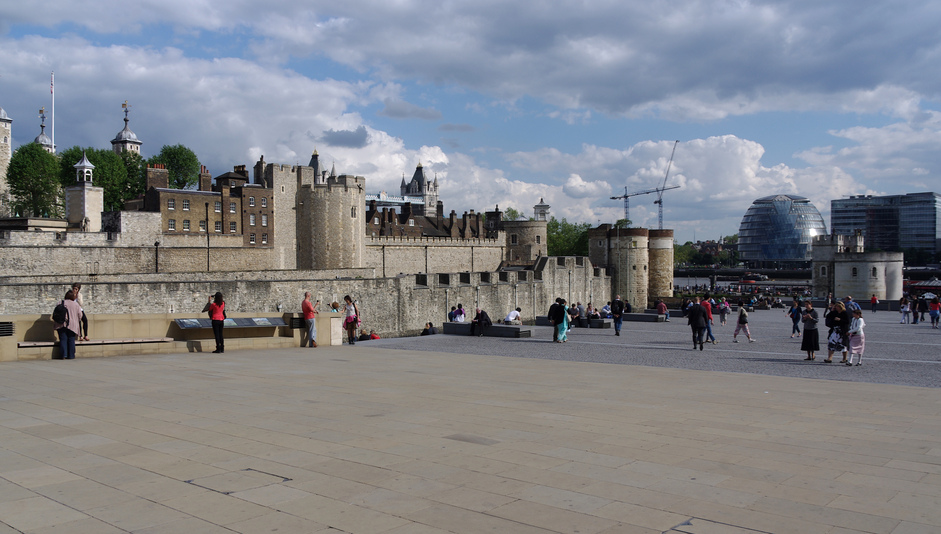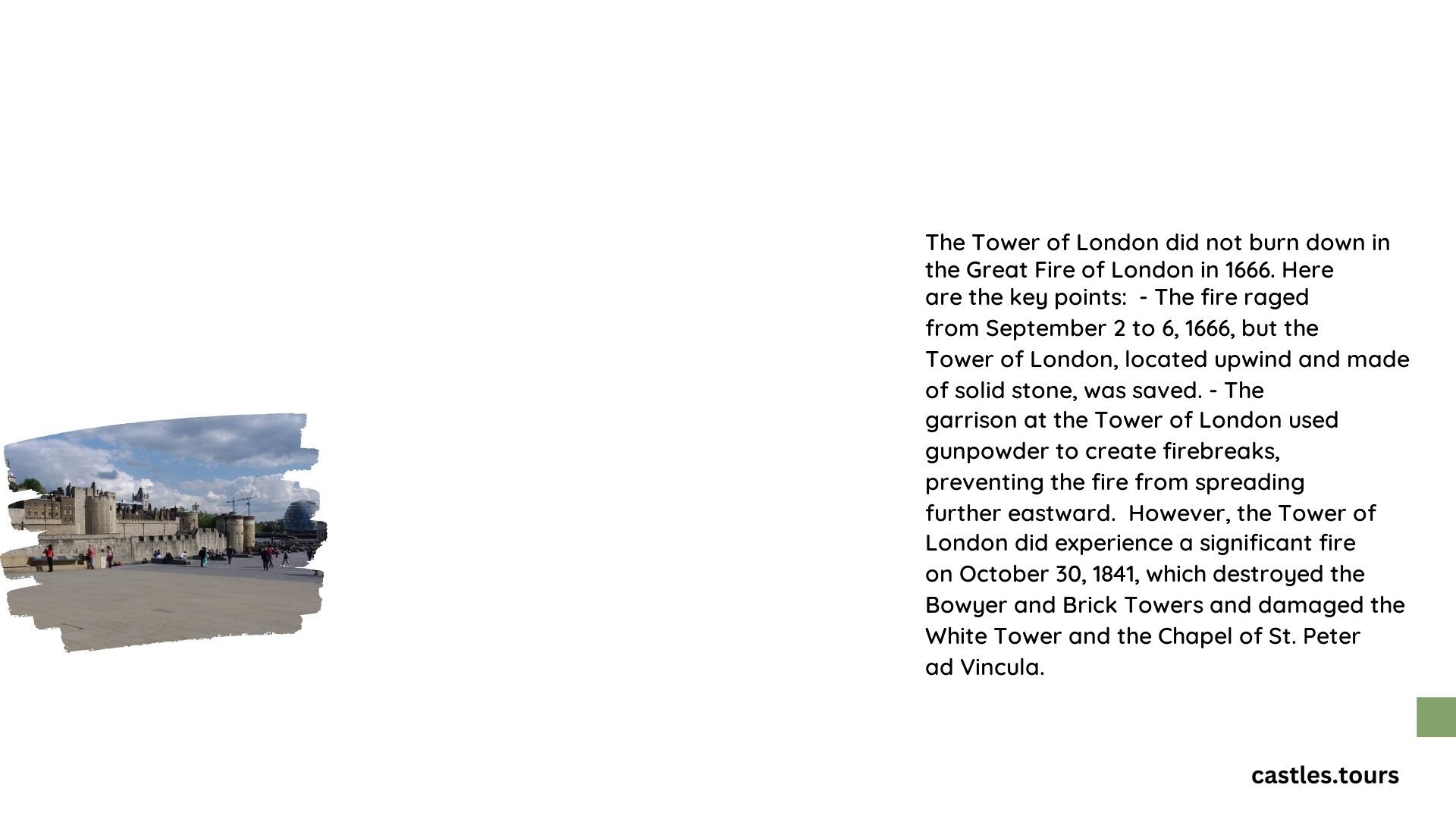The Tower of London did not burn down during the Great Fire of London in 1666. Despite the widespread destruction across the city, the Tower remained intact due to its strategic location, solid stone construction, and effective firefighting efforts by its garrison. The Tower’s survival played a crucial role in containing the fire and preventing further devastation to London’s eastern areas.
What Happened to the Tower of London During the Great Fire?

The Great Fire of London, which began on September 2, 1666, ravaged much of the city but spared the Tower of London. Several factors contributed to its survival:
- Location: The Tower was situated upwind of the fire’s path.
- Construction: Built primarily of stone, the Tower was more fire-resistant than the wooden structures prevalent in the city.
- Firefighting tactics: The Tower’s garrison employed innovative methods to create firebreaks.
How Did the Tower’s Garrison Protect It?
The Tower’s defenders took decisive action to safeguard the fortress:
- Used gunpowder to demolish nearby buildings, creating effective firebreaks
- Prevented the fire from spreading eastward towards the Tower
- Demonstrated strategic thinking in emergency response
What Other Fires Has the Tower of London Faced?

While the Tower survived the Great Fire of 1666, it has experienced other fire incidents throughout its long history:
| Year | Fire Incident | Extent of Damage |
|---|---|---|
| 1339 | Lightning strike | Minor damage to a tower |
| 1774 | Accidental fire | Damaged the Grand Storehouse |
| 1841 | Fire in the Bowyer Tower | Limited to one structure |
None of these fires approached the scale or potential devastation of the Great Fire of 1666.
Why Was the Tower’s Survival Significant?
The Tower of London’s endurance through the Great Fire held immense importance:
- Symbol of Resilience: It stood as a testament to the city’s ability to withstand disaster.
- Strategic Asset: The Tower’s survival ensured the continuity of its multiple roles:
- Royal residence
- Fortress
- Prison
- Armory
- Historical Preservation: Countless artifacts and records housed within were saved.
How Did the Tower’s Survival Impact London’s Recovery?
The Tower of London’s intact state after the Great Fire contributed significantly to London’s recovery efforts:
- Served as a stable base for organizing relief and reconstruction
- Maintained a sense of continuity and order amidst chaos
- Preserved important administrative and military functions
What Lessons Were Learned from the Tower’s Fire Resistance?
The Tower’s survival during the Great Fire offered valuable insights:
- Importance of Fire-Resistant Materials: Stone construction proved superior to wood.
- Effective Firefighting Techniques: The use of firebreaks became a recognized strategy.
- Urban Planning: The need for better city layout and building regulations became evident.
How Has the Tower’s Fire Safety Evolved Since 1666?
Since the Great Fire, the Tower of London has continually updated its fire safety measures:
- Installation of modern fire detection and suppression systems
- Regular fire drills and staff training
- Preservation of historical integrity while implementing safety upgrades
What Role Does the Tower Play in London’s Fire History Education?
Today, the Tower of London serves as an educational resource on fire history:
- Exhibits detailing the Great Fire and the Tower’s role
- Guided tours highlighting fire safety advancements over centuries
- Educational programs for schools on London’s fire history
How Does the Tower’s Survival Reflect London’s Resilience?
The Tower of London’s endurance through the Great Fire exemplifies London’s ability to overcome adversity:
- Symbolizes the city’s strength and adaptability
- Demonstrates the effectiveness of strategic planning and quick action
- Inspires confidence in London’s capacity to face future challenges
In conclusion, the Tower of London did not burn down during the Great Fire of 1666, thanks to its robust construction, strategic location, and the quick thinking of its defenders. This historical fact not only highlights the Tower’s resilience but also underscores its significance in London’s rich history of overcoming disasters and emerging stronger.
References:
1. Wikipedia – Great Fire of London
2. Royal Museums Greenwich – The Great Fire of London
3. Walks.com – The Great Fire of London
